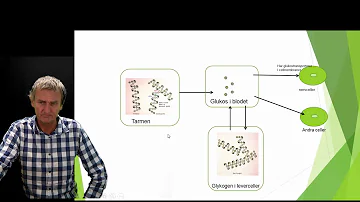What are the characteristics of a Gram positive bacteria?
Innehållsförteckning
- What are the characteristics of a Gram positive bacteria?
- What are the main difference between Gram positive bacteria and gram negative bacteria?
- What are the 3 gram positive bacteria?
- What are bacteria characteristics?
- What are the names of Gram positive bacteria?
- What are three differences between gram positive and Gram negative cells?
- How might the physical differences between gram positive and Gram negative bacteria contribute to differences in chemical resistance?
- What are the characteristics and significant beneficial properties of the gram positive and gram negative bacteria?
- What is the classification of Gram positive bacteria?
- What are 4 characteristics of bacteria?

What are the characteristics of a Gram positive bacteria?
Gram-positive bacteria are bacteria with thick cell walls. In a Gram stain test, these organisms yield a positive result....Generally, they have the following characteristics:
- No outer membrane. ...
- Complex cell wall. ...
- Thick peptidoglycan layer. ...
- Certain surface appendages.
What are the main difference between Gram positive bacteria and gram negative bacteria?
Difference between Gram-Positive and Gram-Negative Bacteria
| Gram-Positive bacteria | Gram-Negative bacteria |
|---|---|
| It is a thick layer/ also can be multilayered | It is a thin layer/ often single-layered. |
| Teichoic acids | |
| Presence of teichoic acids | Absence of teichoic acids |
| Outer membrane |
What are the 3 gram positive bacteria?
Gram-positive bacteria, including staphylococci (Staphylococcus aureus, S. epidermidis,) streptococci (Streptococcus pyogenes, S. pneumoniae, etc.), enterococci, and many anaerobic gram-positive bacteria (e.g., Clostridium difficile, C. perfringens, Listeria monocytogenes), are susceptible to teicoplanin in vitro.
What are bacteria characteristics?
There are three notable common traits of bacteria, 1) lack of membrane-bound organelles, 2) unicellular and 3) small (usually microscopic) size. Not all prokaryotes are bacteria, some are archaea, which although they share common physicals features to bacteria, are ancestrally different from bacteria.
What are the names of Gram positive bacteria?
The Gram-positive bacteria include staphylococci ("staph"), streptococci ("strep"), pneumococci, and the bacterium responsible for diphtheria (Cornynebacterium diphtheriae) and anthrax (Bacillus anthracis).
What are three differences between gram positive and Gram negative cells?
Most bacteria can be broadly classified as Gram positive or Gram negative. Gram positive bacteria have cell walls composed of thick layers of peptidoglycan. Gram positive cells stain purple when subjected to a Gram stain procedure. Gram negative bacteria have cell walls with a thin layer of peptidoglycan.
How might the physical differences between gram positive and Gram negative bacteria contribute to differences in chemical resistance?
How might the physical differences between gram positive and gram negative bacteria contribute to differences in chemical resistances? how the affect the cell wall, gram pos bacteria have thicker peptidoglycan so will be more resistant to chemicals.
What are the characteristics and significant beneficial properties of the gram positive and gram negative bacteria?
Gram positive bacteria have a thick peptidoglycan layer and no outer lipid membrane whilst Gram negative bacteria have a thin peptidoglycan layer and have an outer lipid membrane.
What is the classification of Gram positive bacteria?
Actinobacteria is the taxonomic name of the class of high G+C gram-positive bacteria. This class includes the genera Actinomyces, Arthrobacter, Corynebacterium, Frankia, Gardnerella, Micrococcus, Mycobacterium, Nocardia, Propionibacterium, Rhodococcus, and Streptomyces.
What are 4 characteristics of bacteria?
Bacteria are like eukaryotic cells in that they have cytoplasm, ribosomes, and a plasma membrane. Features that distinguish a bacterial cell from a eukaryotic cell include the circular DNA of the nucleoid, the lack of membrane-bound organelles, the cell wall of peptidoglycan, and flagella.














